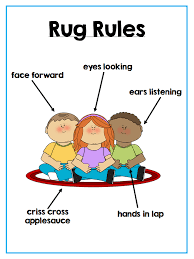
Classroom Management 101
Without classroom management even the best designed lesson and most engaging tasks will be useless. Classroom management is the foundation of teaching, and without it chaos rules.
When classroom structures are in place everyone can thrive including the teacher. Significant research has found classroom management has the largest effect on student achievement (Marzano, 2013). Click here for PPT on classroom management research.



So teachers top priority before school begins should not be on the fun and engaging lessons, but in planning a management system that is developmentally appropriate and inclusive of all students.
Before students even enter the classroom, management begins. From the way students file into the class, to the placement of student belongings, expectations and the tone are being set and internalized by the students.


So what’s a new teacher to do on the first day of school. Here are my top ten management tips for new teachers:
- Greet students at the door. Shake their hand and ask their name.
- Set clearly designated areas in your classroom for students to place their belongings, turn in homework and get materials and practice these routines and procedures. (how to turn in homework, enter the room, get materials and leave the room etc.)
- Create a syllabus of your classroom expectations, consequences and routines (this is especially important for middle and high school) and be sure you add this to your class website or blog. (You can have parent/student signature for points)
- Get to know your students with an icebreaker or human scavenger hunt so they can get to know you and each other. Have them write an autobiography (free on TPT) at home with a parent (if needed) to find out about their culture and learning style.
- When issues arise address them immediately. If you don’t you are telling your students it’s okay to do this.
- Be consistent in your policies and expectations. What goes for one, goes for all.
- Establish hand signals and cues to get students attention.
- Write your agenda on the board everyday and review expectations.
- Be fair and firm. Say what you mean and mean what you say.
- Don’t let them see you sweat until summer time. 🙂 Always keep you cool and stay positive.
What’s your best strategy for managing the classroom? Share with us so everyone can thrive!
Join our digital discussion on Facebook: https://www.facebook.com/groups/teachtech1/








